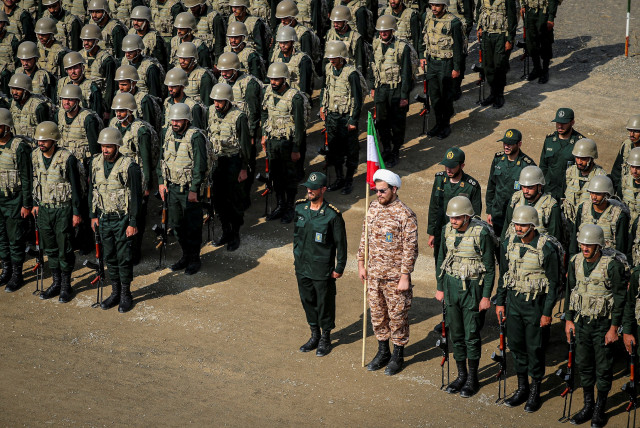Iran claims to have armed its Karar drones with missiles

Iran’s Tasnim News stated that the air defense units of Iran have been armed with drones that have air-to-air missiles.
Iran foresees a new role for its Karrar drone. It has armed the drone with what it calls Majid air-to-air missiles. This drone has a range of 1,000km, and Iran’s regime has claimed it in the past.
The drone had been seen with an air-to-air missile in late October. This is the latest announcement by the Iranian regime that the drone or UAV may be used in an air defense capacity.
In a new ceremony, Iran’s Tasnim News said that the drones have now joined the air defense units of Iran.
The capability of the drone
The combination of the drone and the missile would give Iran a new type of capability because Iran’s air force is relatively small.
Giving Iran new interceptors in the air would increase the country’s capabilities to defend its long borders. However, this would require the country to have a lot of these drones armed at all times.
It would also require the country to have the right radars to help detect and perhaps guide the drones. It’s currently unclear how the drone will be flown to intercept its target and then launch its missile. It’s also unclear how this will be an improvement on Iran’s existing air defenses such as the 3rd Khordad system.
Iran’s commander of its air defenses, Alireza Sabahifard, said that the drones could be used on most of Iran’s borders in the West and East.
What is the aim of the drone?
The new capability is designed for Iran’s official air force, not the IRGC, as the IRGC already has drones, defenses, and capabilities of its own.
Iran’s main aim in putting missiles on the Karrar drone appears to be to save costs.
The new capability is at a much lower cost than manned fighter planes, with the reason for the price decrease being that Iran’s actual air force is aging, and Iran appears to know it is not up to the task.
Iran has been seeking new warplanes from Russia, but, overall, Iran faces major hurdles in modernizing its air force.
Iran’s Tasnim News said that under the new plan, the drone can track targets using “thermal” and “visual” methods and that this is a completely “indigenous” achievement of Iran’s industries.
According to Tasnim News, the Karrar drone armed with the Majid missile successfully performed in the army's drone exercise in October of this year.
The Karrar drone is an interesting platform for missiles because it previously appeared to be a re-design of a target drone used in the West, and it is unclear how it returns to base. The drone also appears in design more like a cruise missile than a drone.
In essence, the Iranians have taken a very simple platform and armed it with missiles.
It appears the theory for Iran’s air defenders here is that if a threat is detected, the Karrar drone can be launched and quickly move to intercept. It will do so by using its engine, and claimed speed of some 900 km/hr, to get within several kilometers of the threat and then launch its missile. Although doing this appears to be an unwieldy way to perform this mission, it meets Iran’s needs, as the country doesn't have enough warplanes to carry out such duties.
Putting missiles on drones provides Iran with other ways to threaten its neighbors. For instance, it can fly these drones out to sea and then use them to attack other drones.
Iran could, in theory, use this drone to fly out to sea and then use the drone’s missile to attack an enemy drone.
This may be another concept for Iran in terms of countering drones, not countering manned aircraft.
Jerusalem Post Store
`; document.getElementById("linkPremium").innerHTML = cont; var divWithLink = document.getElementById("premium-link"); if (divWithLink !== null && divWithLink !== 'undefined') { divWithLink.style.border = "solid 1px #cb0f3e"; divWithLink.style.textAlign = "center"; divWithLink.style.marginBottom = "15px"; divWithLink.style.marginTop = "15px"; divWithLink.style.width = "100%"; divWithLink.style.backgroundColor = "#122952"; divWithLink.style.color = "#ffffff"; divWithLink.style.lineHeight = "1.5"; } } (function (v, i) { });

